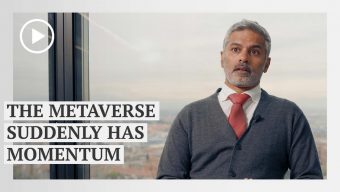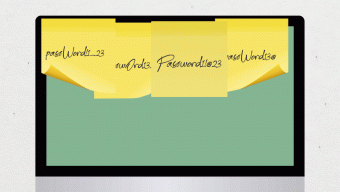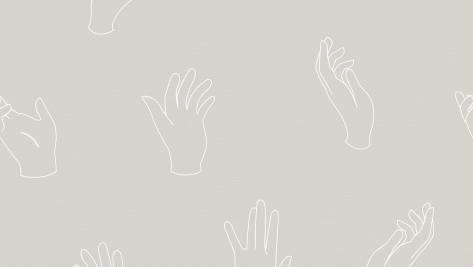Until the 1970s, architects were unable to use advertising to promote their businesses. Because of the importance of colleague endorsements, the sector developed internal communication methods that often involved the use of peculiar jargon intelligible only to other architects. Paradoxically, architecture and design rely on powerful communication tools such as models and sketches, in addition to films, opinion pieces, participation in exhibitions, conferences, and of course more obvious media such as brochures, websites and variations such as blogs, etc.
What’s clear is that nowadays there are numerous opportunities to share opinions and discuss projects. The past few years have seen an explosion of architecture and design websites with new profiles, including Houzz, Archello, Archtizer, Dexigner, World Architects, and American Architects. And of course, we still have traditional communication platforms, websites, and blogs, as well as social media like Twitter, Facebook, and LinkedIn.
Nevertheless, although the opportunities to tell are more numerous than ever before, the key is to move from tell-and-sell to interacting, developing relationships, and building knowledge. This is a difficult challenge that requires communicative intelligence and the ability to choose your conversations wisely, focusing on those which are of particular interest.
To further your goals, you must label yourself, your company, your work, and tell the story of who you are and what you do.
Opportunities and challenges
There are many instruments that can help you communicate—platforms, films, networks, websites, conferences—but the key is to build a relationship with your target audience. The goal is to be aware of the person you’re communicating with, so that you can collaborate with them rather than having a one-way connection. The idea is to build and share knowledge in a participatory manner, to contribute to conversations and lead them, if possible—or at least know who’s leading them—in order to participate more or less actively. To do this, you have to be aware of the environments of interest and the main influencers in each area.
All these routes involve potential benefits in terms of building your brand, showing who you are and how you want to be seen, and then analyzing and promoting this identity. You need others to choose you, so you have to stand out from competing services and other options. This involves an exercise in introspection, with a view to determining the precise ways in which you are different. Otherwise, you’ll end up competing in categories such as price—which may be precisely the area in which you are different. To quote Seth Godin: “A brand is the set of expectations, memories, stories and relationships that, taken together, account for a consumer’s decision to choose one product or service over another. If the consumer (whether it’s a business, a buyer, a voter or a donor) doesn’t pay a premium, make a selection or spread the word, then no brand value exists for that consumer.”
We live in the hashtag age. To further your goals, you must label yourself, your company, your work, and tell the story of who you are and what you do. I’m not just referring to hashtags associated with the labels that we use online, in the world of social media, Facebook, Instagram, and Twitter. What I’m proposing is a broader concept: hashtagging as a call to action. It’s an action that involves generating your own label or banner, ratcheting up the concept of the brand, and discussing a proposition that labels you in the most comprehensive and dynamic sense: hashtagyourself, hashtagyourcompany, or hashtagyourwork. In other words, be very aware of what you are, what you do, and how you do it, in order to configure and convey a legitimate value proposition that is true to who you are. Four architects—Bjarke Ingels, Rem Koolhaas, Norman Foster, and Frank Gehry—are good examples of hashtaggers, in this sense of this word.
Hashtagging is the idea of dynamic self-labeling and generating your own banner, a task for which you must be very aware of what you are, what you do, and how you do it.
Ingels and Koolhaas
The work of the Danish architect Bjarke Ingels symbolizes a strange yet playful optimism. It is practical and immediately accessible. His personal brand—often confused with that of his company, Bjarke Ingels Group (BIG)—is cheerful and approachable. To some extent, these labels also encompass the company. BIG’s brand or label is so evident that people who aspire to work for the group think that doing something fresh and fun is the best way to have an impact and get a job offer. A clear example is the architect Étienne Duval, who made an ingenious rap video to send BIG a message about his skills and abilities. As Duval noted, to catch a big fish you need a big hook. He approached his cover letter to BIG in the same way he would approach an architectural project: looking for the key criteria and playing with them.
Rem Koolhaas is another architect who is good at self-labeling. This is a different sort of example, because Koolhaas participates incessantly in conferences and continues to use traditional channels in some ways, but he has still managed to project his image via film. In fact, his son has just released a documentary about him, entitled REM. Along similar lines are the films about important architects made by the French-Italian artists Ila Bêka and Louise Lemoine. One of their works, Houselife Koolhaas, is a film about a private home built by Rem in Bordeaux. The key in this case is that the filmmakers used everyday people—such as the housekeeper—who have some connection to the house. This is a very human way of showcasing the property, focusing on its use.
Bjarke Ingels and Rem Koolhaas are professionals who, in addition to making a splash in the audiovisual and online world, continue to participate in—and even lead—academic discussions. They have offline, real-life, academic versions of themselves that remain accessible, because they remain interested in participating and building knowledge through collaboration: that’s perfect hashtagging.
Bjarke Ingels and Rem Koolhaas are professionals who, in addition to making a splash in the audiovisual and online world, continue to participate in—and even lead—academic discussions.
Foster and Gehry
Through a neo-futurist skyscraper designed for the reinsurance company Swiss Re in the heart of London’s financial district—informally known as “The Gherkin”—Norman Foster reaffirmed himself professionally in the eyes of a mass audience as someone capable of tackling highly complex architectural challenges and emerging victorious. The project is an example of how a building can have a big impact on an architect’s career, on the overall image of a company, and even on a city’s brand, by shaping its skyline. To unveil and introduce the building, a film made with Foster’s participation in 2005 reveals the tension that built up between Swiss Re, the mayor, the funders, and the architectural firm. The film shows how the various elements converged before the architect ultimately triumphed over myriad difficulties. This element must be taken into account in projects that involve integrating a building into the urban environment of a major city, with the building sitting in the eye of the storm. Managing this situation entails additional complexity in the face of public opinion and the various stakeholders involved. That’s what Foster represents. In short, he’s a great hashtagger!
Frank Gehry, for his part, is an architect who is controversial and in many ways unique. He represents the real as opposed to the digital or the world of social media. Gehry is defined by his pen-and-paper sketches, which he posts on his website. In his work, Gehry starts with these sketches, which he then transforms into models, which are later computerized. The documentary Sketches of Frank Gehry, which premiered at the Cannes Film Festival, was directed by Gehry’s friend Sydney Pollack. Gehry considered Pollack to be the ideal person for the job because he had no knowledge of architecture and had never done any work on the subject. Gehry’s designs are innovative and risky, but also functional. The architect defends his use of drawings and the practice of transforming them into a design. This is a good example of hashtagging, as it involves transferring Gehry’s personal brand to the title of the documentary and to the Internet.
Other lesser-known professionals trained in architecture and design have also managed to achieve international fame thanks to the importance they have placed on communication and the sharing of knowledge. Examples include Nicholas Negroponte, best known as the founder and director of the MIT Media Lab; the fashion designer and film director Tom Ford; and the Indian businessman Ratan Tata, creator of the Tata Nano, the world’s cheapest car.
Making it look easy is the hard part. Hashtagging is an art that requires awareness of the environment and of oneself, as well as the generosity to share and “converse.” New technologies have helped to create more opportunities for hashtagging, but we must remember that the ultimate responsibility lies with one’s own communicative intelligence.
© IE Insights.











